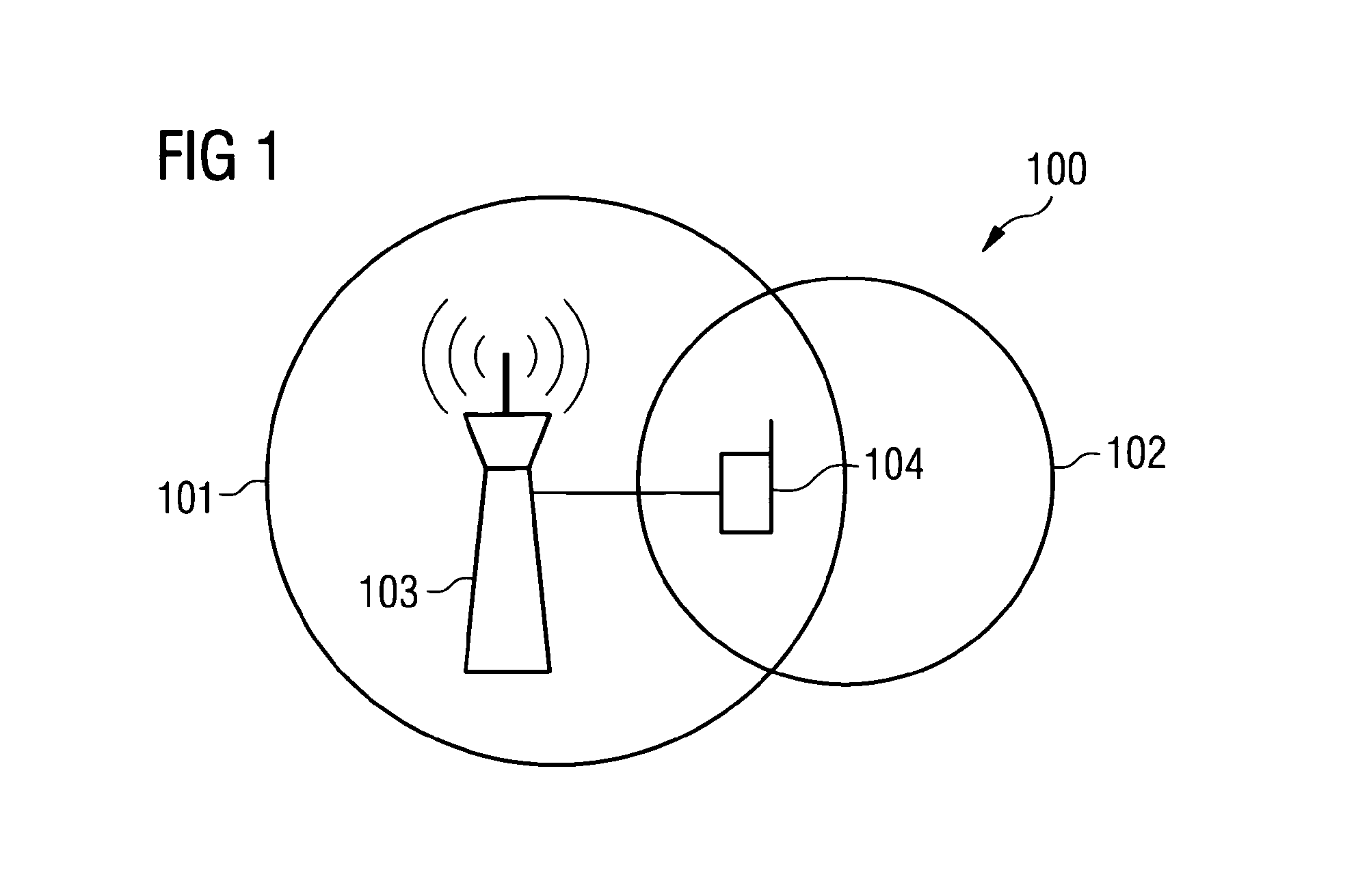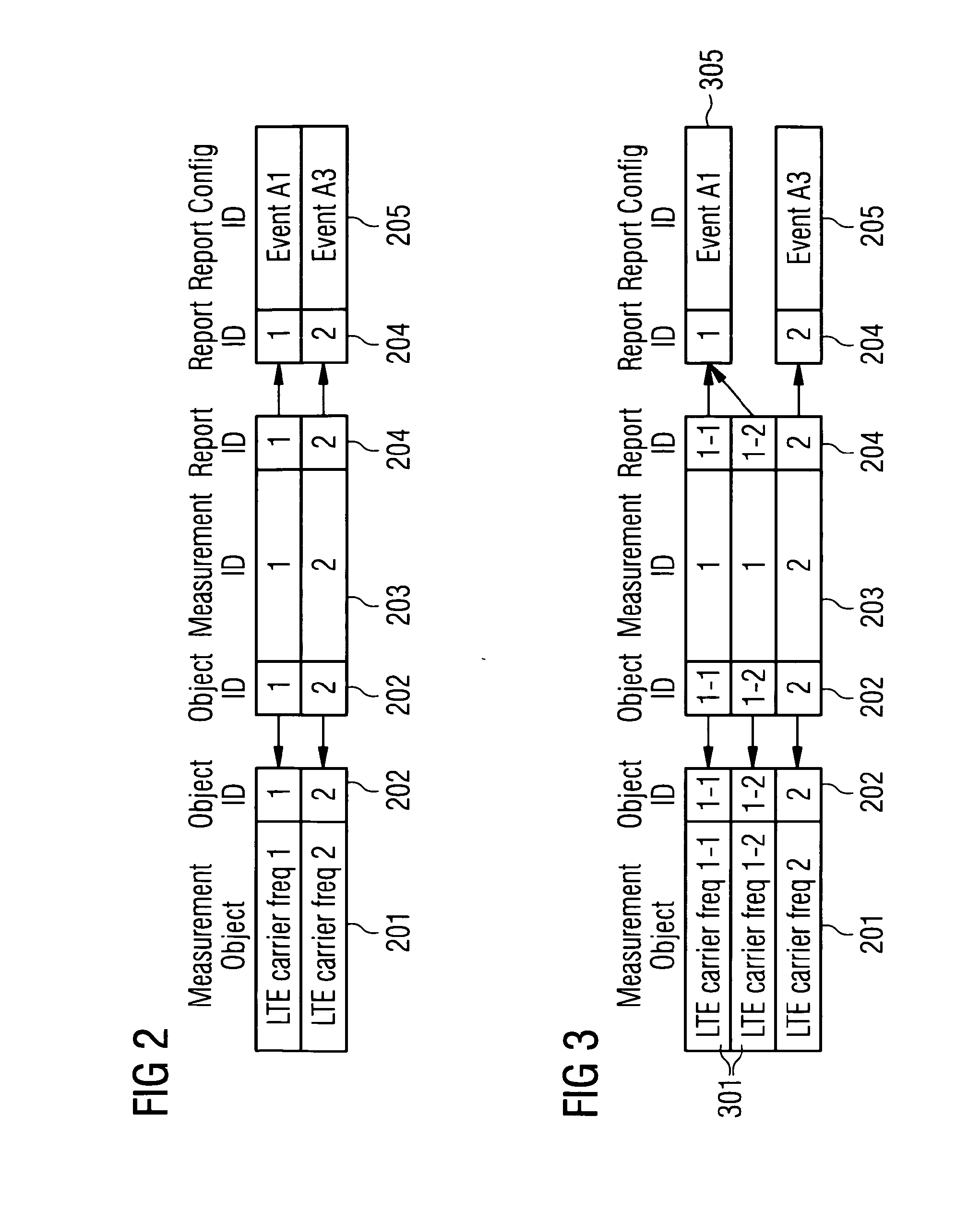Controlling Radio Measurements of a User Equipment within a Cellular Network System
a radio measurement and user equipment technology, applied in the field of cellular networks, can solve the problem of not being able to configure two or more measurement objects, and achieve the effect of enhancing the measurement configuration and related measurements, maximizing mobility performance, and maximizing the measurement configuration
- Summary
- Abstract
- Description
- Claims
- Application Information
AI Technical Summary
Benefits of technology
Problems solved by technology
Method used
Image
Examples
Embodiment Construction
[0067]In the following, embodiments of the herein disclosed subject matter are illustrated with reference to the drawings and reference to aspects of current standards, such as LTE. However, such reference to current standards is only exemplary and should not be considered as limiting the scope of the claims.
[0068]FIG. 1 shows a cellular network system 100. A user equipment 104 is served by and located in a cell 101. The cell 101 has a first cell type characteristic. The cell 101 is served by a (serving) base station 103. The cell 101 may also be called “source cell”. The cellular network system comprises at least one further cell 102. The at least one further cell 102 has a second cell type characteristic. The at least one further cell 102 is neighbored to the cell 101 and may be the target cell for a handover. The base station 103 provides a radio measurement configuration to the user equipment 104. The radio measurement configuration is indicative for parameters to be applied by ...
PUM
 Login to View More
Login to View More Abstract
Description
Claims
Application Information
 Login to View More
Login to View More - R&D
- Intellectual Property
- Life Sciences
- Materials
- Tech Scout
- Unparalleled Data Quality
- Higher Quality Content
- 60% Fewer Hallucinations
Browse by: Latest US Patents, China's latest patents, Technical Efficacy Thesaurus, Application Domain, Technology Topic, Popular Technical Reports.
© 2025 PatSnap. All rights reserved.Legal|Privacy policy|Modern Slavery Act Transparency Statement|Sitemap|About US| Contact US: help@patsnap.com



